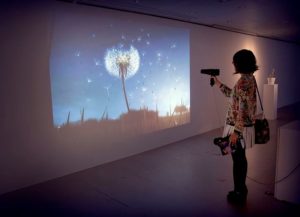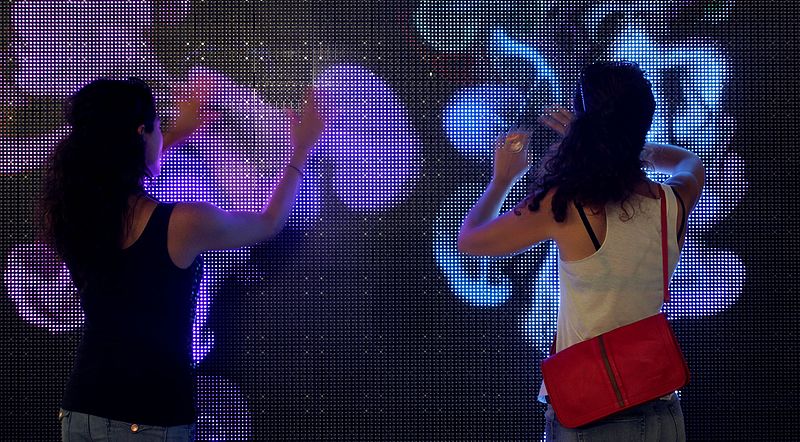I will start this article with a question. Is interactive art actually art? Yes, It is art! However, it is a type of art that does not belong to a specific period in history or genre, and its purpose differs to an extent from the purpose of art we are accustomed to. So, what is interactive art? In this article, I will talk about interactive art in general, I will write about its history, and finally, I will write about its relation to technology.
WHAT IS INTERACTIVE ART?

Interactive art is a form of art that goes beyond the conventional art forms and, as it was mentioned before, it involves some kind of interaction. It is a type of art that invites you to participate in its realization. Sometimes it involves literal participation, when the audience is called to walk in the art form, however, sometimes, the interaction is different. Sometimes the audience is called to change the outcome, or to become a part of the artwork.
It goes hand in hand with digital art, for example, the Internet and electronic art are very interactive. In general, it is related to technology very much. The use of computers and computing helped interactive art to a great extent. However, the interaction does not always depend on technology, it depends on the proposed situations to the audience to make them participate.
THE HISTORY OF INTERACTIVE ART
The examples of interactive art are traced back to 1920. In the 1920s, the audience was required to turn on the machine and then stand at a certain distance to see the optical illusion provided by The Rotary Glass Plates artwork. The 1960s changed a lot, and the artists started including their audience in the creative process of their artworks. In the 1970s, the artists started using videos and satellites. They did some live performances and thus made interactive art more popular. Since the 1990s, the development of technology, and especially computers and the internet gave the artists more opportunities for the spectators’ participation.

INTERACTIVE ART AND TECHNOLOGY
The technology became very helpful for the artists. It presented many new ways for interaction between the audience, the artist and the artwork. Nowadays, there are online curated shows and internet-based artworks, which enable people all over the world to participate in the creative process.
In the future, we may expect new ways of presenting artworks and new opportunities for interaction due to the fast development of technology. IN the meantime, we can enjoy the artworks and try to change the outcome or to become a part of the artwork.

